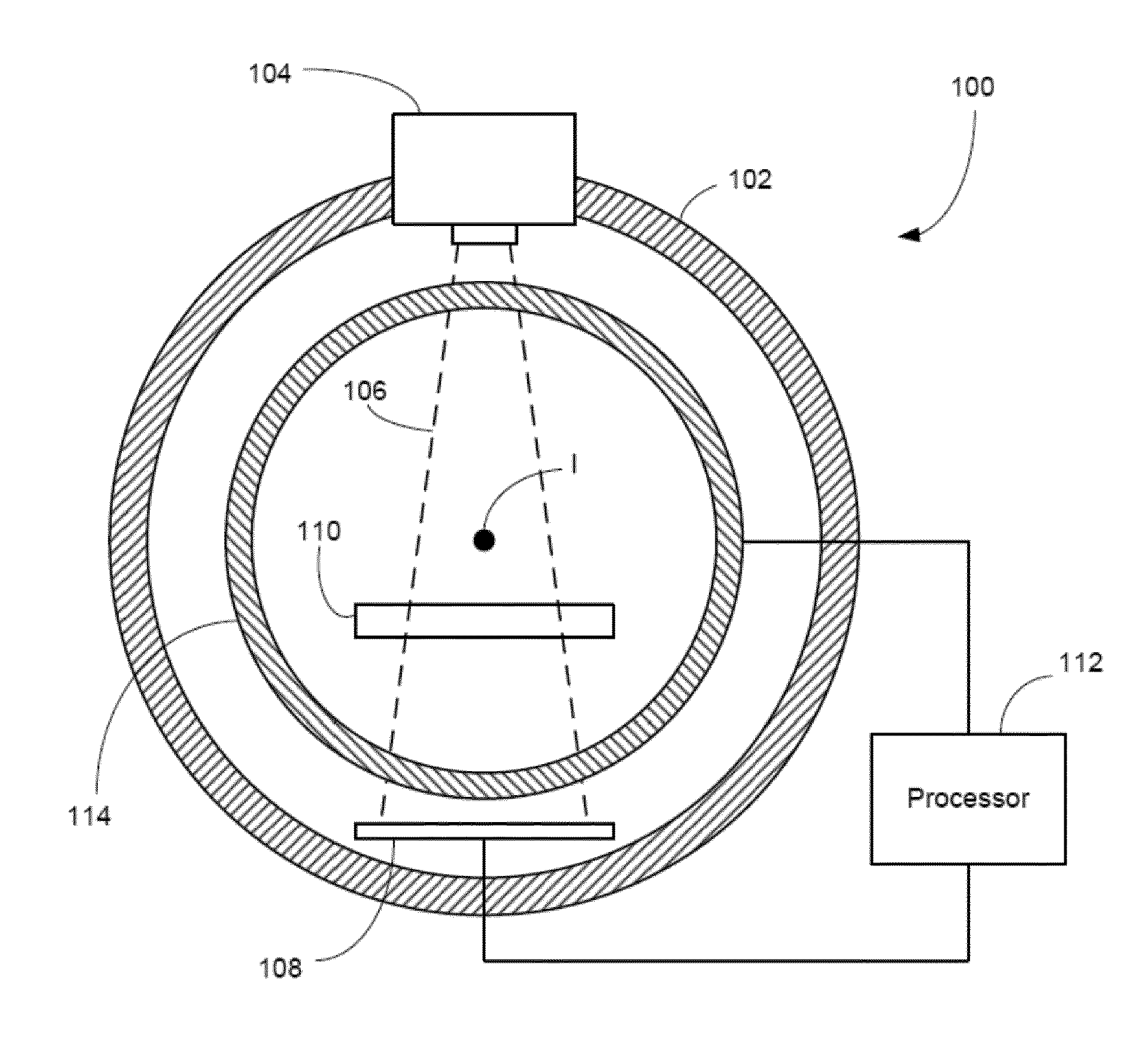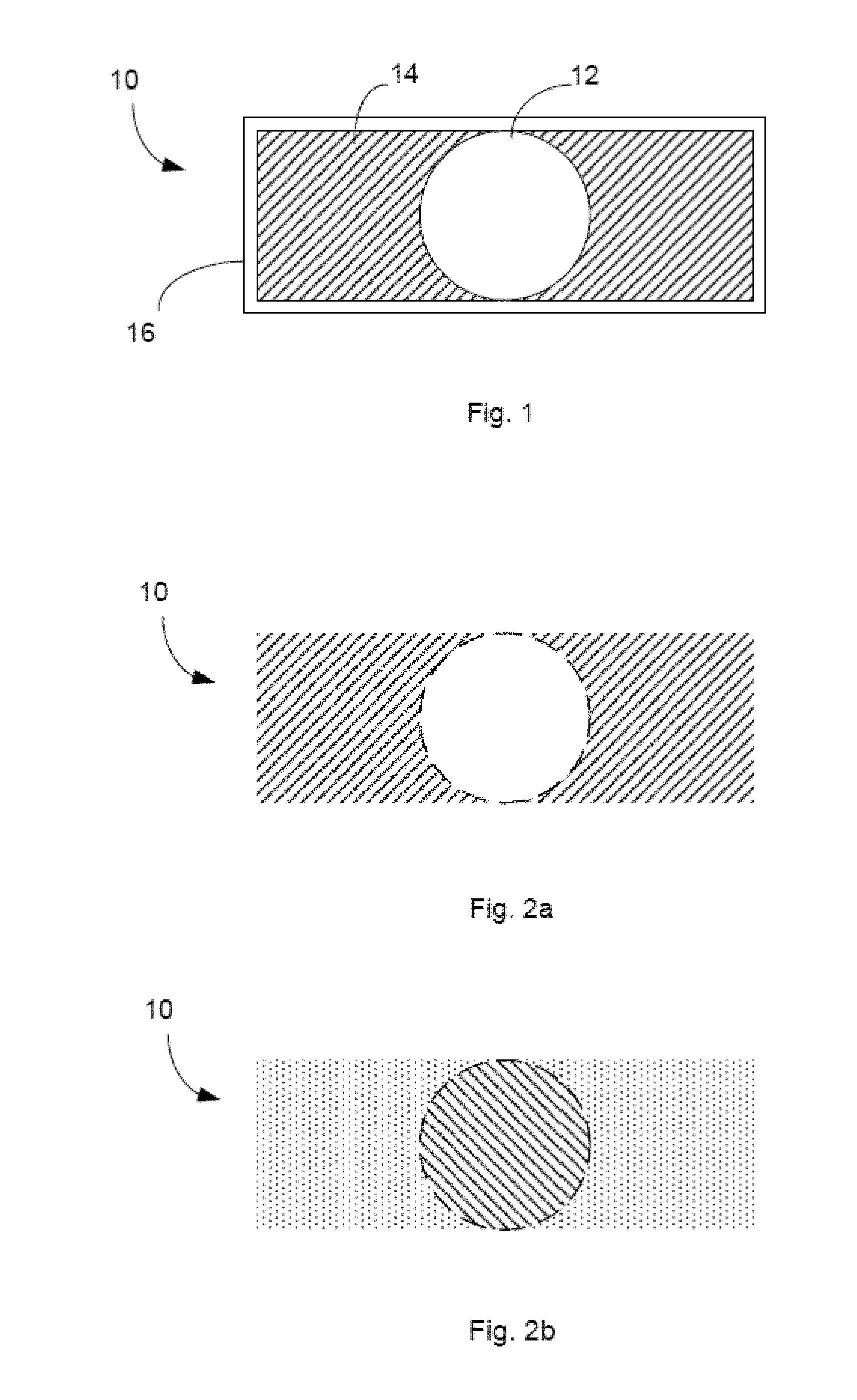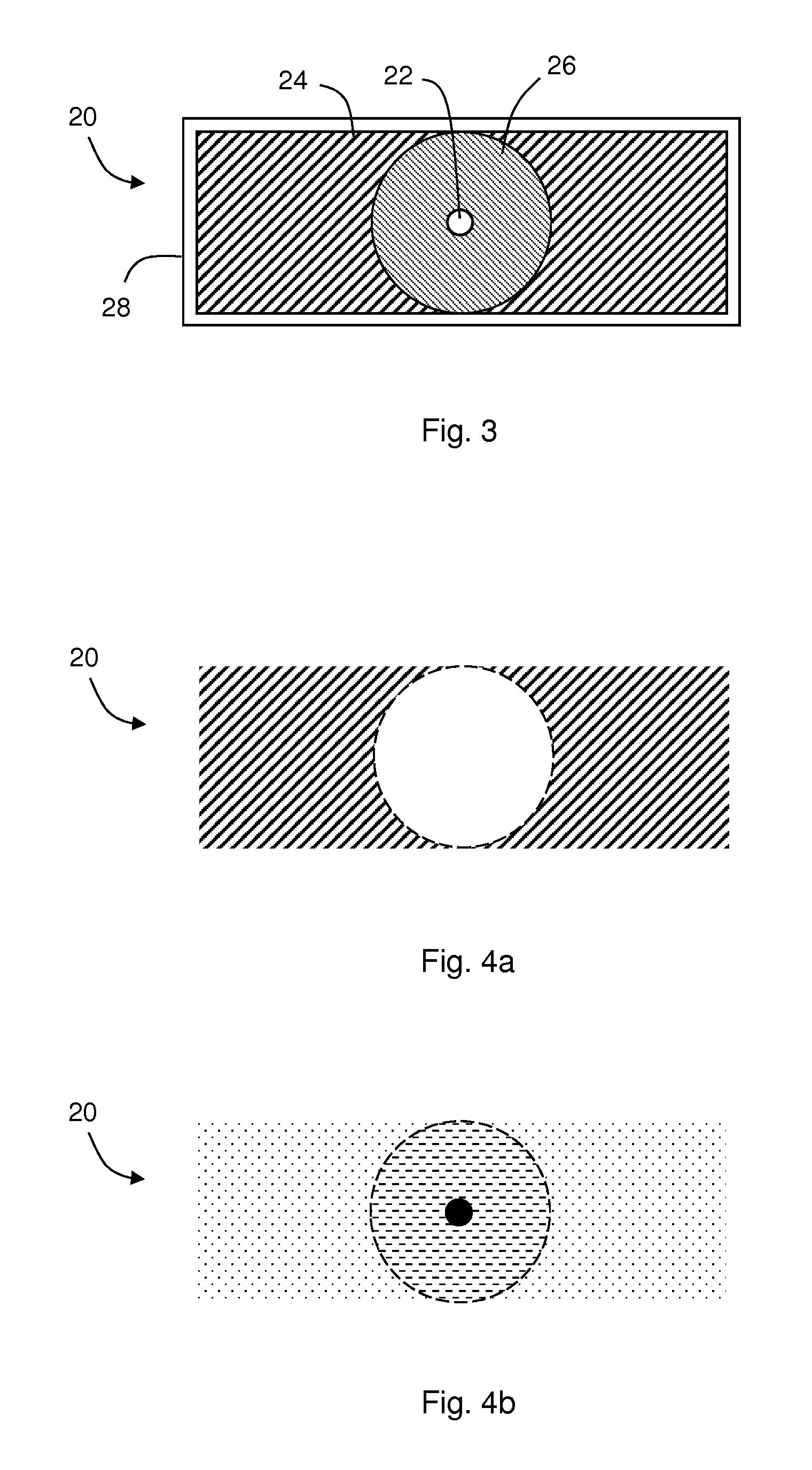Markers, phantoms and associated methods for calibrating imaging systems
a technology of imaging system and markings, applied in the field of medical imaging, can solve the problems of introducing a potential source of error and a further source of error in the ball bearing of mr imaging markers
- Summary
- Abstract
- Description
- Claims
- Application Information
AI Technical Summary
Benefits of technology
Problems solved by technology
Method used
Image
Examples
Embodiment Construction
[0020]FIG. 1 shows a cross section of a marker 10 according to embodiments of the present invention. As will be explained below, the marker 10 is suitable for use in a variety of medical imaging systems using different imaging modalities.
[0021]In order to understand how the marker works, it is instructive first to consider the different imaging mechanisms which may be employed in medical imaging.
[0022]Magnetic resonance (MR) imaging operates by placing the imaging object in a high strength magnetic field. Currently, the field strength density typically varies from system to system between 0.2 and 3 T. In this strong magnetic field, the magnetic moments of hydrogen protons in the object become aligned with the magnetic field. By applying an electromagnetic signal having a resonant frequency to the object, the spins of those protons can be made to flip. When the electromagnetic signal is switched off, the protons flip back and emit an electromagnetic signal which can be received in re...
PUM
 Login to View More
Login to View More Abstract
Description
Claims
Application Information
 Login to View More
Login to View More - R&D
- Intellectual Property
- Life Sciences
- Materials
- Tech Scout
- Unparalleled Data Quality
- Higher Quality Content
- 60% Fewer Hallucinations
Browse by: Latest US Patents, China's latest patents, Technical Efficacy Thesaurus, Application Domain, Technology Topic, Popular Technical Reports.
© 2025 PatSnap. All rights reserved.Legal|Privacy policy|Modern Slavery Act Transparency Statement|Sitemap|About US| Contact US: help@patsnap.com



